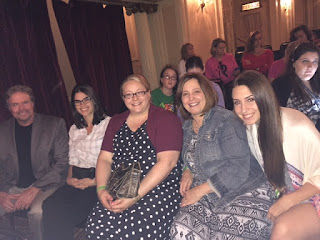About a month ago, Steve Peterson (@insidethedog) invited me and Jan Burkins (@janmillburk) to try writing a renga with him. Renga is an ancient collaborative poetic form, and is actually where haiku was born!
Steve gave us these directions and resources:
Directions
- 3 line haiku-like poem
- 2 longer lines (sort of like a tanka form when you put them together). Another person writes this.
- 2 lines are inspired by the haiku immediately above.
- then, 3-line haiku poem inspired by the 2 previous lines,
The order of play went Steve, me, Jan (repeat). Here's our first renga:And some resources
- and so on like a game of telephone until we reach 35 lines total.
a description of the form.
some examples.
in the prairie dawn
a spider's web snares the sun --
cricket rejoices
meadowlark joins the chorus
breeze bends ripening wheat heads
whose lanky bodies
bow, sun’s church--peace be with wheat
and also with corn
they gather on folding chairs,
jello melts while the preacher prays
white-robed acolytes
shoulders shaking with giggles
two clouds hide the sun
even the adolescent stalks are sober today
word of fire in the neighboring field
this dark sky --
thunderheads poke fingers
at a thirsty land
near the abandoned homestead
ditch lilies toss flaming heads
who called this place home
does the ground remember
stories brought to earth
a faded calendar tacked
to the wall above the stove
try to imagine
the layers of memories
beneath the dust
how much memory is imagination
how much dust is history
sun slants through wavy glass
in the stale air
motes rise to dance
down the road, far down the road
reverberations can be feltSteve instigated this poem writing adventure because of a desire to try collaborative writing, and to practice the haiku and tanka forms, but he found himself meditating on Jan and me as he chose the words he thought would best fit with what we were trying to say.
For me, it was like trying to catch a tune and sing along.
Jan was continually looking for the meaning in each set of 5 lines alongside the meaning of the poem as a whole.
Our memories of church and our ideas of "prairie" were very different, but we realized that Rosenblatt's reader response theory was alive and well as we wrote together -- each of us as reader/writer could bring ourselves to the text and make our own meaning, independent of the two others.
For me, the prairie in the poem is the flat, dry landscape of Eastern Colorado, where I've spent this month with my mom. Wheat harvest has been in full swing, but no one is complaining about the rains that might have delayed some of the harvest -- they were good for the corn. Those white-robed acolytes are my childhood friend Barbie and me, trying to be solemn in our candle lighting duties, but invariably giggling all the way down to the altar and back. The end of the poem is woven with images of change, home, memory, and loss -- all of which have been bitter and sweet in this month of helping my mom transition from her home of 60 years to a new home in assisted living.
Jan and Steve found echoes of current events that I can see now, but that didn't occur to me as we wrote.
We have plans to play with revising this poem, and we are fifteen lines into another. It has been fabulous to take risks together, to watch the poem unfold, and to hear each other's actual voices over the phone after listening so closely to each other's writerly voices on the page. Thank you, Steve and Jan!
Steve's post about this adventure is here.
Jan's post about this adventure is here.
Margaret has the Poetry Friday Roundup today at Reflections on the Teche.




























